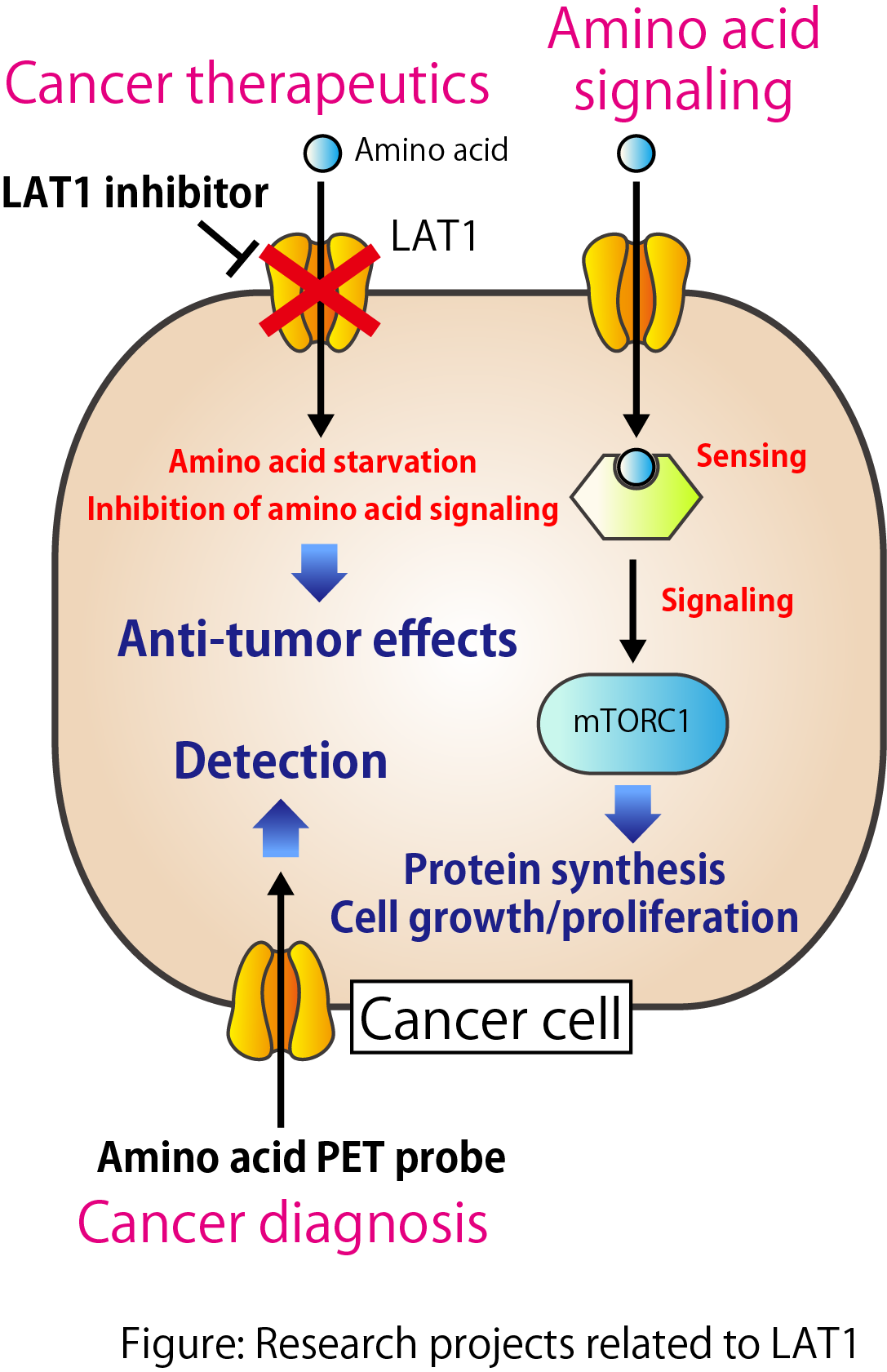RESEARCH
Main projects
- Development of therapeutic- and diagnostic agents for cancers, targeting cancer cell specific amino acid transporter
- Molecular mechanisms of amino acid sensing and signaling, and its significance in physiology and pathology
- Roles of transporters in various cell- and tissue-specific functions under physiological and pathological conditions
We have been focusing on "Transporters", membrane proteins responsible for the selective transport of solutes across the biological membranes. By understanding of the structure and function of transporters, and by elucidating the intermolecular interactions and the regulatory mechanisms of transport functions, we would like to reveal the importance of transporters in various cell- and tissue-specific functions under physiological and pathological conditions. Evaluation of transporters as novel targets for drug developments is also in our scope. To achieve that, in addition to traditional biochemical and pharmacological transport analyses, we apply a wide range of experimental techniques such as proteomic analysis specialized for membrane proteins, phosphorylated proteomics, metabolomics, phenotypical analysis of genetically modified animals. Our research covers the multiple biological hierarchy including molecules, cells, tissues, organs and whole body.
One of our main research projects is particularly related to the amino acid transporter LAT1 (L-type amino acid transporter 1) and cancer (see figure below). Expression of LAT1 is significantly limited in normal tissues, whereas it is remarkably enhanced in many types of cancer tissues regardless of the primary organ or the tissue origin. It has also been shown that there is a correlation between LAT1 expression and malignancy in several cancers. LAT1 selectively transports many essential amino acids and functions, so as to say, as a "cancer cell-type amino acid transporter", thereby contributing to the progression of cancer. We have demonstrated that excellent antitumor effects can be obtained by inhibition of LAT1, using our newly developed LAT1 inhibitor. Currently, we are further promoting our research for the practical clinical application of LAT1 inhibitor. At the same time, we are also working on the development of amino acid PET probe targeting LAT1, as a companion diagnostic agent. We are expecting that, by enabling the treatment and diagnosis targeting the same molecule, a high efficacy of cancer treatment would be achieved in the future.

Recently, amino acids such as leucine, one of the major substrates of LAT1, are attracting an increasing attention of researchers as the essential signaling molecules for a serine/threonine kinase complex mTORC1 (mammalian target of rapamycin complex 1). mTORC1 plays a pivotal role in the regulation of intracellular metabolism, cell growth, and proliferation. In several diseases such as cancers and diabetes mellitus, disregulation of mTORC1 pathway is often reported, and thus the abnormality of amino acid signaling is considered to contribute to the pathogenesis. We focused on the amino acid sensing mechanism located downstream of LAT1, the intracellular signaling pathway activated by amino acids, and the intracellular metabolic functions controlled by amino acids. Especially in cancer cells, such study is indispensable to fully understand the mechanisms of action of LAT1 inhibitor as an anti-tumor agent. It is also of note that the amino acid sensor that directly recognize amino acids would be a highly promising target molecule of drug development to control their downstream signaling pathways. We are trying to identify the amino acid sensor molecule which holds an important medical significance for development of therapeutic drugs for related diseases.